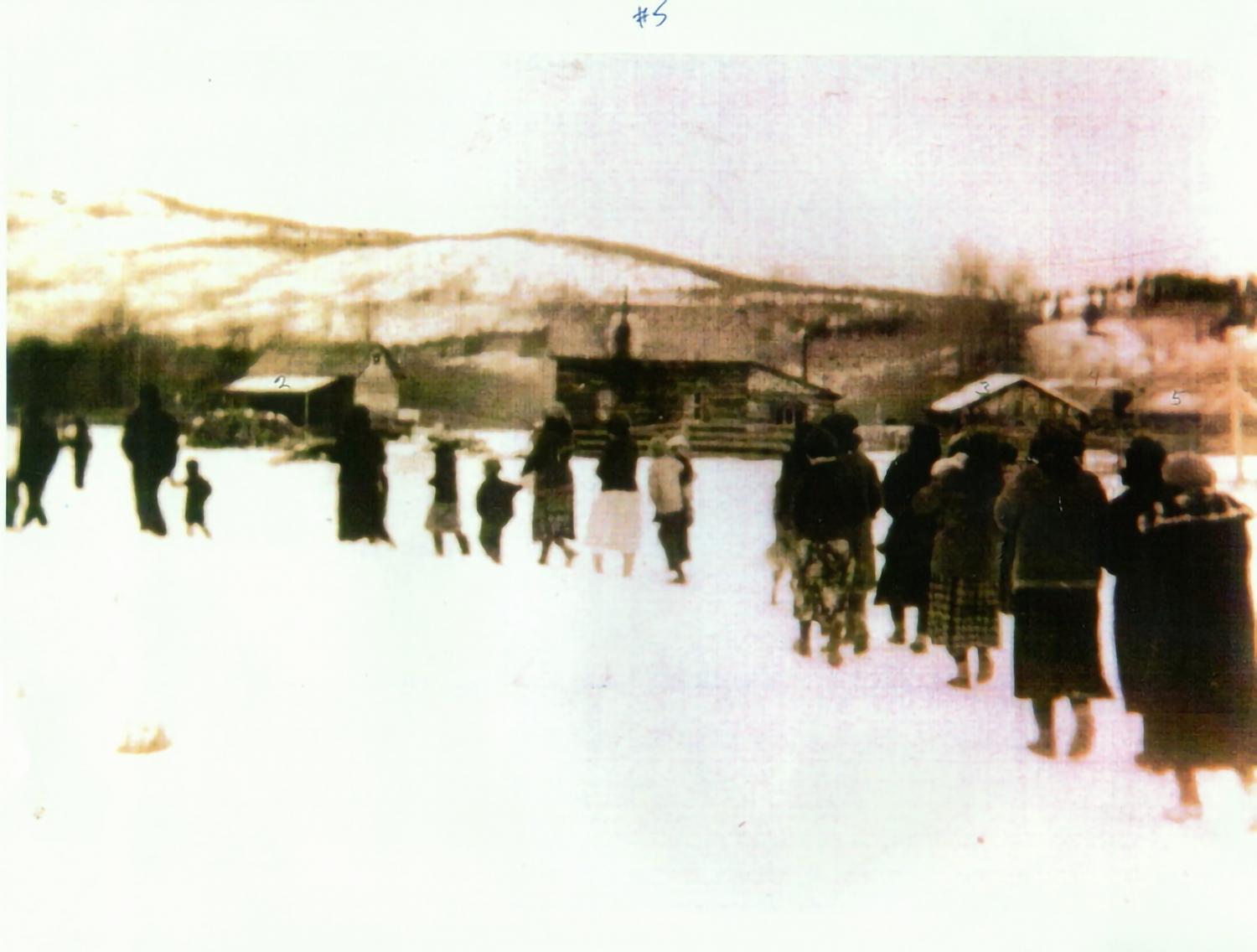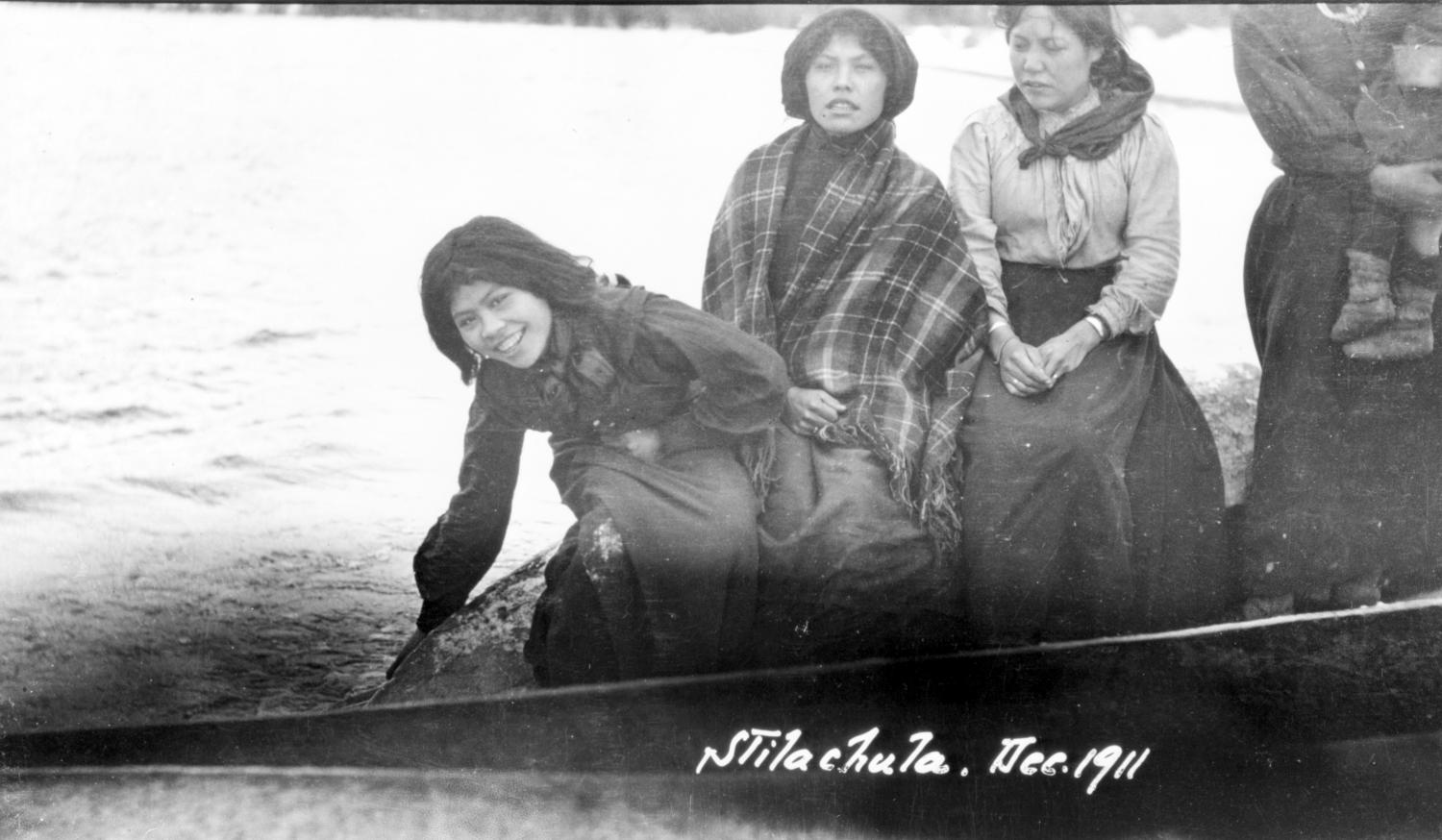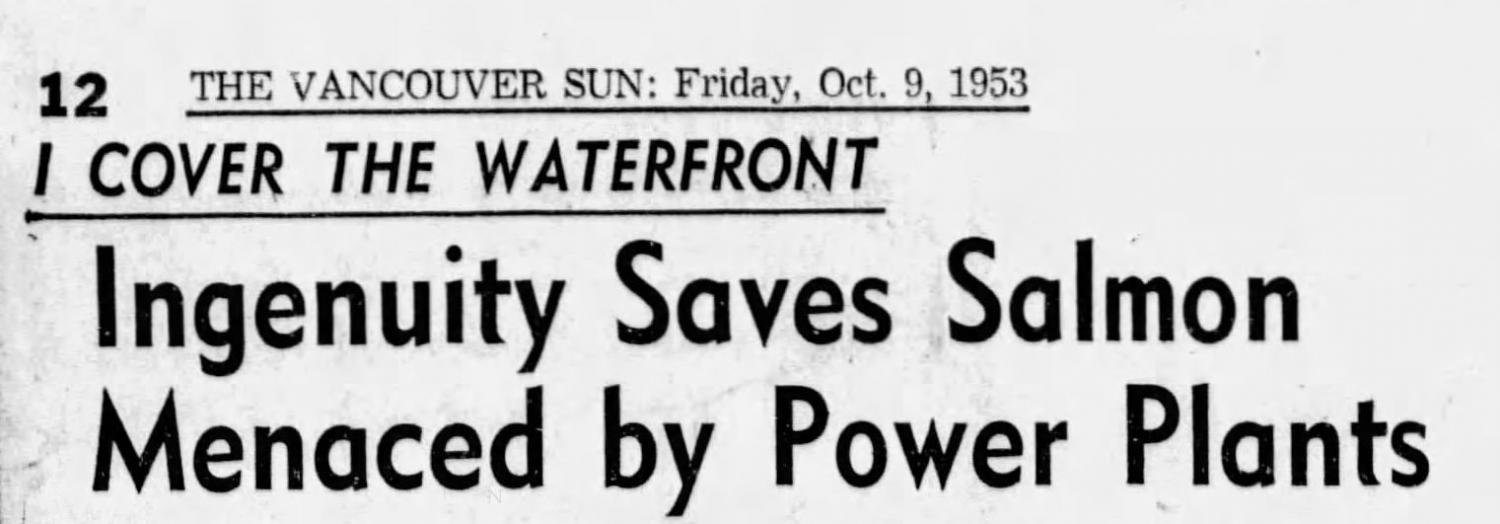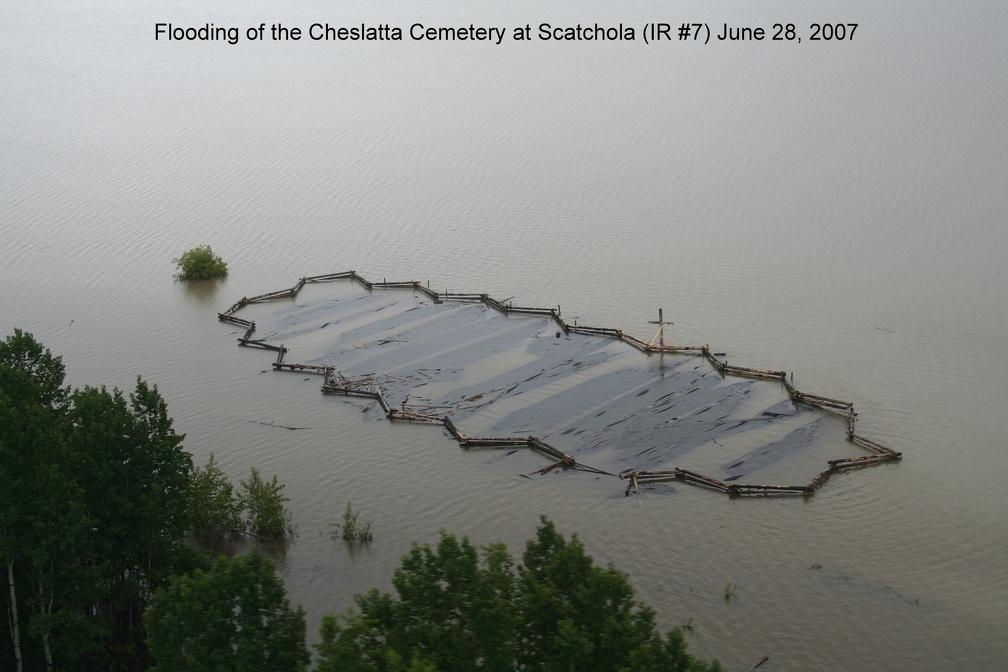Cheslatta Lose Their Land
Central Interior band say a government official forged documents surrendering their territory
Date: 1952
For centuries, the Cheslatta Carrier people — also known as the Cheslatta T’en — had lived on the banks of the Cheslatta and Murray Lakes in the central Interior of what is today British Columbia. To survive, they hunted, fished and traded with other First Nations via the famed Grease Trail, an ancient trading route centred on the exchange of eulachon oil. As European settlements popped up nearby, some Cheslatta took jobs on farms or at sawmills, but they maintained their traditional practices. In the early 1950s, that peaceful existence came to a sudden end.
On the heels of the Second World War, far removed from the quiet shores of Cheslatta Lake, the Western world was undergoing an economic revolution spurred on by unparalleled manufacturing and consumption. Demand for raw resources like aluminum, used to build planes, cars and domestic products, had skyrocketed. Resource-rich B.C. wanted in on the action. Following the war, the province launched a frenzy of hydroelectric dams and other infrastructure projects to open up B.C.’s Interior to greater resource extraction, often at the expense of nearby communities and Indigenous peoples.
In 1951, the provincial government and the Aluminum Company Of Canada (Alcan) entered into the largest public-private partnership ever introduced in Canada until that point, estimated at $500 million USD at the time. To power an aluminum smelter in the purpose-built company town of Kitimat, Alcan would dam the Nechako River by building the Kenney Dam, then the largest rock-filled dam in North America. But damming the Nechako wasn’t simple. When officials realized the Kenney Dam would interrupt local salmon runs, they devised a plan to protect their migration by also damming Murray Lake. That, in turn, meant flooding Cheslatta villages. But it didn’t stop the government nor Alcan.
On April 3, 1952, the Cheslatta learned their fate. In a matter of weeks, a community numbering around 200 would be kicked out of their homes. To make up for the loss of their ancestral territory, they demanded new land and buildings, monthly pensions, compensation for lost traplines and livestock, and new roads connecting them to any reserves that remained unflooded. They were met with scoffs. Government officials called their demands "fantastic and unreasonable" — "definitely out of the question."
According to official records by the Department of Indian Affairs, on April 21, the Cheslatta Carrier Nation unanimously voted to hand over 2,600 acres of land to Alcan for approximately $130,000. However, to this day, the nation insists they did not sign over their territory. In 1991, a forensic scientist hired by the nation concluded that the documents surrendering Cheslatta land had been forged. Two weeks after they were told they had to leave, with only the bare essentials, the Cheslatta headed north to Grassy Plains, where they spent months living in tents. “They told us to only take what we need and come back later,” said Abel Peters, a former Cheslatta chief who acted as a translator for his people. “They said it would be safe — my tools, saws and everything. When we came back, it was all burnt down.”
Though the Québec-based company had promised to carefully move graves threatened by flooding, Alcan only moved a few. When the waters rose, dozens of graves were destroyed, and the remains of ancestors began floating to the surface. "That still occurs to this day," Cheslatta Chief Corrina Leween said in 2019. "We still find bones along the lake.” Eventually, land near Francois Lake, south of Burns Lake, was set aside for the displaced Cheslatta, but not for free. Band members bought the new land using money Alcan had paid out. Today, the once close-knit community still lives on those scattered reserves.
In recent decades, the B.C. government and Rio Tinto, which bought Alcan in 2007, have presented various restitution packages to redress past wrongs. The reparations have included funding for education, resource management and cultural revitalization, as well as significant land transfers. In 2019, B.C. promised to hand over more land in the future but to what extent is unknown.
Sources:
- Agreements between Cheslatta Carrier Nation and Province of British Columbia. 28 Mar. 2019, https://engage.gov.bc.ca/app/uploads/sites/121/2019/05/BK_Cheslatta-Agreements-20190502.pdf.
- Baba, Sofiane, and Emmanuel Raufflet. "Managing Relational Legacies: Lessons from British Columbia, Canada." Administrative Sciences, vol. 4, no. 1, Jan. 2014, pp. 15–34, doi:https://doi.org/10.3390/admsci4010015.
- Cheslatta Carrier Nation. "You’re Never Too Small to Achieve Big Things." Aboriginal Business & Investment Council, 23 Mar. 2013, https://web.archive.org/web/20131215010450/http:/www.bcabic.ca/content/youre-never-too-small-achieve-big-things.
- "Cheslatta Carrier Nation and Rio Tinto Sign Benefits Agreement." Prince George Citizen, 3 Mar. 2020, https://www.princegeorgecitizen.com/local-news/cheslatta-carrier-nation-and-rio-tinto-sign-benefits-agreement-3739582.
- "Cheslatta Carrier Nation Backgrounder." Cheslatta Carrier Nation, 6 May 2021, https://www.cheslatta.com/ccn-backgrounder-lightbox.
- "Cheslatta Carrier, Province Sign Agreements to Address 1950s Resettlement, Flooding." Prince George Daily News, 17 Apr. 2019, https://pgdailynews.ca/index.php/2019/04/17/cheslatta-carrier-province-sign-agreements-to-address-1950s-resettlement-flooding/.
- Hunter, Justine. "Reconciliation for Cheslatta Flooding Has Been Decades in the Making." The Globe and Mail, 11 Sept. 2016, https://www.theglobeandmail.com/news/politics/globe-politics-insider/reconciliation-for-cheslatta-flooding-has-been-decades-in-the-making/article31822113/.
- Internal Government Telegraphs Provided by the Cheslatta Carrier Nation.
- "Over 100 Years of History in Canada." Association de l’aluminium Du Canada, February, https://web.archive.org/web/20110903022730/http://www.aac.aluminium.qc.ca/e403.html#date_5.
- Robertson, Mike. The Story of the Surrender of the Cheslatta Reserves on April 21, 1952. Cheslatta Carrier Nation, 1991.
- Rowland, Robin. "Editorial: Calgary Herald Calls Northern Gateway Opponents ‘Eco-Pests’BC 2012 Halibut Quota Drops 8 per Cent, as Canada Protests Devastation Caused by Pollock Trawl in Gulf of Alaska ‘Nursery.’" Northwest Coast Energy News, 30 Jan. 2012, http://nwcoastenergynews.com/2012/01/30/1314/rta-returns-lands-cheslatta-carrier-nation/.
- Stueck, Wendy. "Set This Town on Fire." The Globe and Mail, 26 Oct. 2001, https://www.theglobeandmail.com/report-on-business/rob-magazine/set-this-town-on-fire/article18419288/.
- Trumpener, Betsy. "First Nation Wins Redress for Flooded Village, Forced Relocation to Make Way for Industry in 1952." CBC, 18 Apr. 2019, https://www.cbc.ca/news/canada/british-columbia/cheslatta-compensated-for-1952-alcan-relocation-1.5102933.
- Wikler, Maia. Remembering Forward: Navigating the Everyday of Forced Displacement with the Cheslatta T’en. University of British Columbia, 2019.







